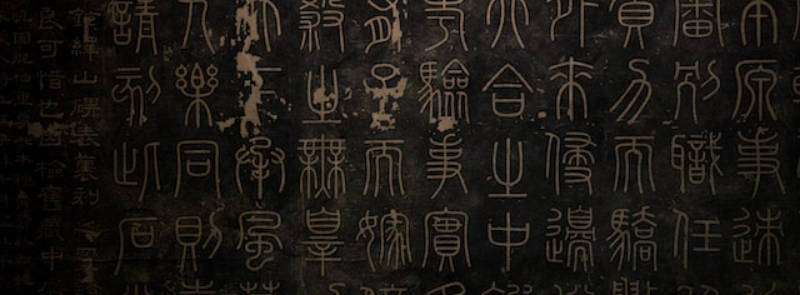
When It Occurs
Every April 20th
Official Website
Timeline
Days Passed (907)
# Hashtags
#ChineseLanguageDay #PromoteChineseLanguage
Annually observed on April 20th, the United Nations (UN) Chinese Language Day was established in 2010 by the UN Department of Public Information. This celebration aims to honor multilingualism and cultural diversity while advocating for the equal utilization of all six official working languages of the UN.
Additionally, the day serves as a tribute to Cangjie, a mythical figure credited with inventing Chinese characters approximately 5,000 years ago.
History and Background
- Date: April 20th
- Establishment: The United Nations Department of Public Information established Chinese Language Day in 2010.
- Purpose: To celebrate the Chinese language, promote cultural diversity, and encourage the use of Chinese within the United Nations and around the world.
Objectives
- Promote Chinese Language: Increase awareness and appreciation of the Chinese language and its contributions to world culture and history.
- Encourage Multilingualism: Support the use of Chinese as one of the UN’s six official languages and promote multilingualism within the organization and beyond.
- Celebrate Cultural Heritage: Highlight the rich cultural traditions and historical significance of the Chinese language.
- Foster Cultural Exchange: Encourage cultural exchange and understanding between Chinese-speaking communities and the rest of the world.
Importance of the Chinese Language
- Historical Significance: Chinese is one of the oldest languages in the world, with a history spanning thousands of years.
- Cultural Richness: The language is integral to Chinese literature, philosophy, art, and traditional practices.
- Global Influence: Chinese is spoken by over a billion people worldwide, making it the most spoken language globally.
- Economic Impact: China’s economic rise has increased the importance of the Chinese language in global trade, business, and international relations.
Celebrations and Activities
- Language Workshops: Educational institutions and cultural organizations host workshops on Chinese language learning, calligraphy, and traditional arts.
- Cultural Performances: Events featuring traditional Chinese music, dance, theater, and poetry are organized to celebrate the cultural richness of the language.
- Lectures and Seminars: Academic lectures and seminars on Chinese linguistics, literature, and history are held to deepen understanding and appreciation of the language.
- Exhibitions: Museums and cultural centers may host exhibitions showcasing Chinese manuscripts, calligraphy, and other artifacts.
- Social Media Campaigns: Online campaigns and events promote the Chinese language and culture, encouraging people to share their experiences and knowledge using hashtags like #ChineseLanguageDay.
How to Participate
- Learn Chinese: Take the opportunity to start learning Chinese or improve your language skills through classes, online courses, or language exchange programs.
- Attend Cultural Events: Participate in local cultural events, workshops, and performances celebrating Chinese Language Day.
- Read Chinese Literature: Explore Chinese literature, both classical and contemporary, to gain insight into the culture and history of the language.
- Practice Calligraphy: Try your hand at Chinese calligraphy, an art form that beautifully expresses the written language.
- Share and Engage: Use social media to share your experiences and knowledge about the Chinese language and culture, and engage with others who are interested.
Notable Contributions to Chinese Language and Culture
- Classical Literature: Works such as "Journey to the West," "Dream of the Red Chamber," "Water Margin," and "Romance of the Three Kingdoms" are pillars of Chinese classical literature.
- Philosophical Texts: Influential texts by Confucius, Laozi, and other philosophers have shaped Chinese thought and cultural practices.
- Modern Literature: Contemporary authors like Mo Yan, who won the Nobel Prize in Literature, continue to contribute to Chinese literary heritage.
- Chinese Calligraphy: An esteemed art form, calligraphy reflects the beauty and structure of the Chinese written language.
Organizations Involved
- United Nations: Promotes Chinese Language Day as part of its commitment to multilingualism and cultural diversity.
- Confucius Institutes: These institutes around the world promote Chinese language and culture through educational programs and cultural activities.
- Cultural and Educational Institutions: Universities, schools, and cultural organizations participate by organizing events and activities.
Impact of Chinese Language Day
- Increased Awareness: Raises global awareness about the Chinese language and its cultural significance.
- Language Learning: Encourages people to learn and appreciate the Chinese language, contributing to greater linguistic diversity.
- Cultural Appreciation: Promotes understanding and appreciation of Chinese culture and heritage.
- Global Exchange: Fosters international cultural exchange and dialogue, enhancing mutual understanding and cooperation.
By celebrating Chinese Language Day, individuals and communities around the world can engage with the rich heritage of the Chinese language, learn about its historical and cultural significance, and contribute to the global appreciation of linguistic diversity.


